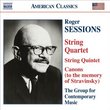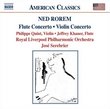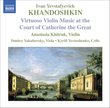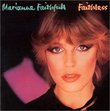| All Artists: Vittorio Giannini, Tom Bennett, University of Houston Wind Ensemble Title: Giannini: Symphony No. 3; Praeludium and Allegro; Variations and Fugue Members Wishing: 0 Total Copies: 0 Label: Naxos Original Release Date: 1/1/2006 Re-Release Date: 5/16/2006 Genres: Jazz, Special Interest, Classical Styles: Swing Jazz, Marches, Chamber Music, Historical Periods, Classical (c.1770-1830), Modern, 20th, & 21st Century, Symphonies Number of Discs: 1 SwapaCD Credits: 1 UPC: 747313013074 |
Search - Vittorio Giannini, Tom Bennett, University of Houston Wind Ensemble :: Giannini: Symphony No. 3; Praeludium and Allegro; Variations and Fugue
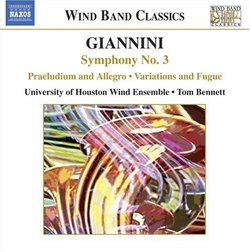 | Vittorio Giannini, Tom Bennett, University of Houston Wind Ensemble Giannini: Symphony No. 3; Praeludium and Allegro; Variations and Fugue Genres: Jazz, Special Interest, Classical
|
Larger Image |
CD DetailsSimilar CDs |
CD ReviewsTop-Flight Wind Players Play Top-Flight Symphonic Scores Thomas F. Bertonneau | Oswego, NY United States | 06/29/2006 (3 out of 5 stars) "Who is Vittorio Giannini? Thanks to the work of musicologist Walter Simmons, who also produced this new Naxos "Wind Classics" CD, we can now place Giannini (1902 - 1966) in his proper context. As Simmons explains in "Voices in the Wilderness" (2005), Giannini belongs to that group of mid-Twentieth Century American composers who refused to assimilate to the austere strictures of the Second Viennese School when its idiom became the mandatory mode of expression in elite musical institutions after World War Two. Instead, the traditionalist composers availed themselves of the "tonal" language of the great Nineteenth Century tradition; they used the musical forms associated with the Baroque and Classical periods. The musical establishment, dedicated to the hoots and squeaks of the post-Webern ethos, did its best to relegate traditionalists to the margins, often treating them vituperatively in the commentaries. Lately, saner appreciation has begun to return some of these composers to performance, at least on disc. Giannini, true to his Italian ancestry, concentrated on the writing of operas in an expressive style related to the Puccini idiom; he also wrote a considerable body of purely instrumental music, including the five works on the present album. All five reflect Giannini's fascination in the 1950s and 60s with that characteristically American medium, the wind band or symphonic wind ensemble. Is not all music for wind ensemble or band second-rate? Some classical music aficionados (I include myself) might bring to the wind ensemble repertory a prejudice, associating such music with the nattering off-key rat-a-tat-blatt of their respective high-school marching bands. Wind-ensemble music has, however, a long and honorable pedigree going back to the partitas and cassations of the Eighteenth Century. Haydn and Mozart wrote graciously and seriously for winds; at least three of Mozart's wind-ensemble scores strive towards the symphonic. The Funeral and Triumphal Symphony by Berlioz is a Nineteenth-Century development of the trend, while in the Twentieth Century Richard Strauss contributed two large-scale wind-symphonies, written at the end of his life. Paul Hindemith then endorsed the medium with an impressive Symphony in B-Flat for Band in the early 1950s, as did Roy Harris around the same time. Then there is Harris' younger contemporary, Vincent Persichetti, who made something of a specialty of serious compositions for band. What about the playing? Giannini's wind-ensemble scores, like these others, definitely belong in the category of serious music. There is no writing down for amateur forces. The best-known item on this beautifully played and gorgeously recorded Naxos program, the Symphony No. 3 for Band (1958), appeared famously on a Mercury LP, close to the time of its completion in score. The legendary and long-lived Frederick Fennell took the lead on that occasion with the Eastman Rochester Wind Ensemble. Fennell's recording will always be bright and convincing, but plenty of room remains for other views. Tom Bennett and the University of Houston Wind Ensemble together bring a different interpretation to Giannini that competes effectively with the benchmark Mercury registration. Fennell treats Giannini's score as a robust work for band that incidentally has the outlines of a standard four-movement symphony; Bennett treats it as a serious and brilliant essay in symphonic writing that the composer incidentally has scored for winds and percussion. Bennett seeks a somewhat "softer" sound than Fennell and adopts a somewhat more lyrical approach in the two inner movements. What is the simplest test to demonstrate the merits of this disc? Listeners can take the musical measure of the program by sampling the opening movement at about five minutes in: the solemn second subject returns, chorale-like, in a quiet reiteration. I would call it one of those "gooseflesh" moments that lift a performance out of the ordinary and into the extraordinary. Producer Simmons has told me, in a generous communication, that Bennett requires his performers to be able not just to play but also to sing their parts. This preparation is evident in the songlike character of the chorale passage mentioned above, where the subtlety of intonation is of the highest order. Throughout, the virtues of Giannini's music put themselves in evidence: clarity of form, memorable melodic profile, ingenious scoring, and emotional variety. Does the title Variations and Fugue portend an exercise in academic dryness? No! The Variations and Fugue (1965) is a work that reflects Giannini's fondness for baroque procedures, but it is also the most harmonically adventurous of his wind-ensemble scores. The variation-section of the piece conforms in plan to the device known as a chaconne or passacaglia, a strict developmental technique anchored to a steady slow ostinato in the bass. The great Eighteenth-Century model is Bach's Passacaglia and Fugue, especially as orchestrated by Stokowski for the Philadelphia Orchestra. Giannini creates a Bach-like grandeur, which the players persuasively render in its relentless graduated build-up to the fugue. The precision of the playing in the skittering double fugue lucidly reveals Giannini's marvelous mastery of contrapuntal structures. The players, all of them young, understand the composer's logic fully; consequently so does the audience. The first and fourth movements of the Symphony also feature exciting fugal moments. These too come across with remarkable clarity; Giannini never merely counts time with busy passagework, but rather he always ties the counterpoint integrally to the development. Collectors might want to seek out Giannini's Concerto Grosso, for strings, on an Albany CD, under the direction of David Amos; the Concerto is another fully convincing neo-baroque composition. What is the relation of the remainder of the program to the two large-scale works? The three shorter pieces exhibit Giannini's craftsmanship and fluency (and his sense of humor, at least as it concerns the Overture). While they do not rise to the same level of artistic achievement as the larger scores, they will not disappoint purchasers of the disc. I strongly recommend this CD. I recommend along with it Simmons' excellent book "Voices in the Wilderness," which devotees of American music must add to their libraries. " Some of the Strongest American Wind Band Works J Scott Morrison | Middlebury VT, USA | 07/01/2006 (5 out of 5 stars) "Although I basically agree with Thomas Bertonneau's exhaustive review of this issue, I do have some question as to why, when he recommends it, he only gives it three stars. I have had this CD for a couple of months and have played it a minimum of ten times -- at home, in the car, in my Discman -- and I keep finding new things about it to be pleased with. It is true that there are some rare rough edges in the playing of this university wind ensemble, but other than that I can find nothing but praise for the release. Kudos also to producer/musicologist Walter Simmons whose book 'Voices in the Wilderness' about six romantic American composers from the middle third of the last century is required reading.
Of course the Symphony No. 3 is the best-known of the pieces recorded here. It has become, since its creation in 1958, a stalwart of the American concert band repertoire. (That first movement's initial theme has stayed in my mind's ear for years, even without my having heard it very often in performance or on disc, ever since I heard the Frederick Fennell recording all those years ago.) For me, though, the real discovery is the first track, 'Dedication Overture' (1965). It not only causes one's spirits to rise, it is so neatly crafted that one cannot hear it without gasping in amazement. I certainly agree with Bertonneau about the 'goosebump' quality therein. It is true that Fantasia (1963), Praeludium and Allegro (1958) and Variations and Fugue (1965) do not quite rise to the heights of the Symphony and the Overture, but they are at the very least interesting and at best quite engaging. This issue is from the fledgling 'Wind Band Classics' series from Naxos. The label seems almost to have a corner on creative programming. Having finally written this, now I will give myself a treat and break the seal on the another Simmons-produced disc from Naxos, a performance of Nicolas Flagello's Piano Concerto and Concerto Sinfonico. Eager anticipation! Scott Morrison" |

 Track Listings (8) - Disc #1
Track Listings (8) - Disc #1